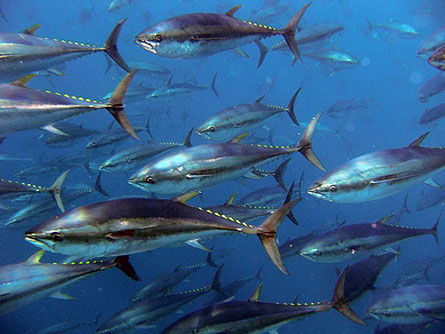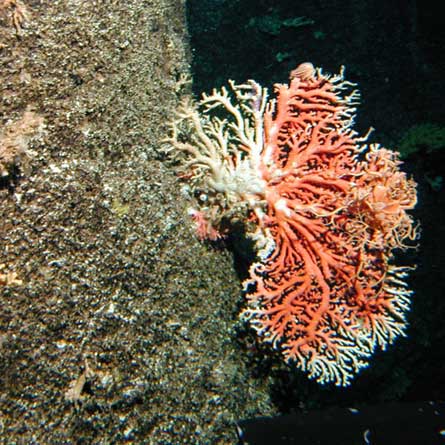A lot of scientists and conservationists find themselves questioning whether science got its due in the latest round of international negotiations on trade in endangered wildlife.



The Conventionon International Trade in Endangered Speciesof Wild Fauna and Flora, or CITES, is a treaty agreement that draws participating nations together about every three years to decide how threatened plants and animals, and products derived from them, can be traded internationally. When the 15th CITES meeting ended in Doha, Qatar, March 25, many conservationists and scientists found themselves somewhere between disappointed and outraged at the failure of proposed measures restricting trade in high-profile marine fishes.
“This wasn’t about the science,” says meeting attendee Phaedra Doukakis, a marine conservation biologist at Stony Brook University in New York.
A proposal to require regulations for international trade in the porbeagle shark came closest to success. The European Union and the Pacific island nation of Palau called for adding the species to the treaty’s Appendix II, a list of worrisomely declining species to be tracked and managed to make sure any international trade is sustainable.
“In sharks,” Doukakis says, “it’s all about harvest.”
Demand runs high for the shark’s meat and fins. Porbeagle stocks in the Northwest Atlantic have shrunk to the point that 16 percent or less of the original abundance of spawning females remains.
The species’ dwindling population and vulnerability to overharvesting ”clearly met the criteria of Appendix II,” Doukakis says. Though a CITES committee voted by a narrow margin to add the porbeagle, on the final day of the conference the full delegation rejected the proposal.
Other declining shark species proposed for listing — three hammerheads, the oceanic whitetip and the spiny dogfish — never even made it out of committee at the meeting. The Coralliidae family of pink and red corals, which are used in jewelry, also failed to progress beyond the committee level.
“The most absurd, outrageous thing to me is that you’ve got all these shark species being depleted on the high seas in international waters, and there is absolutely no mechanism currently out there to regulate that,” says Crawford Allan, who went to Doha as director of TRAFFIC North America, part of a wildlife-trade monitoring group. No government or regional fisheries management group has jurisdiction over shark fishing in international waters.
The Atlantic bluefin tuna does have managers setting harvest quotas. But populations continue to dwindle.
“The fishery management system failed over many years to address the decline of the stock despite clear evidence,” says ecologist Andrew Rosenberg, chief scientist at Conservation International in Arlington, Va.
At the Doha meeting, Monaco took the unusual step of submitting a proposal calling for CITES to get involved in a sizable commercial fishery and put Atlantic bluefin tuna on Appendix I, thus banning international trade in the fish.
The tuna proposal was voted down in committee.
The failure of the CITES proposal threw away “one of the last best chances to protect an iconic species,” Rosenberg says.
Some ecologists questioned the proposal’s effectiveness, however, because the Japanese announced even before the CITES meeting that they would ignore any ban on bluefin fishing. If that were to occur, tuna managers would have no way to monitor the unregulated catches.
“My feelings about the CITES decision are mixed,” says Brian R. MacKenzie, a fisheries ecologist at the Technical University of Denmark in Lyngby who has studied tuna.
Data quality doesn’t seem to have been the big obstacle for marine issues in Doha, however. Proposed changes to important international fisheries attracted remarkable numbers of industry-related officials and representatives, Allan says.
“As a scientist, I am appalled at the level of horse-trading that goes on,” says elephant biologist Joyce Poole of Elephant Voices, who is based in Norway.
CITES needs to assure that science gets more weight, according to conservation biologist Andrew Dobson of Princeton University. Allowing nations to vote on matters involving species that don’t live within their borders creates “a huge potential for irrational trading of votes,” he says.
Nevertheless, a proposal by Tanzania and Zambia to allow sales of ivory from their countries was beaten back, maintaining a nine-year moratorium set by the 2007 CITES meeting. “I was elated,” says Samuel Wasser of the University of Washington in Seattle. “It is time to give elephant downlisting and ivory-sale proposals a rest and focus on healing the wounds.”
Scientists were also encouraged by discussions of the need for stronger measures to fight a recent spike in illegal trades in rhinoceros horns and tiger parts.
“This wasn’t a completely negative conference,” Doukakis says. “If you were a terrestrial species.”







